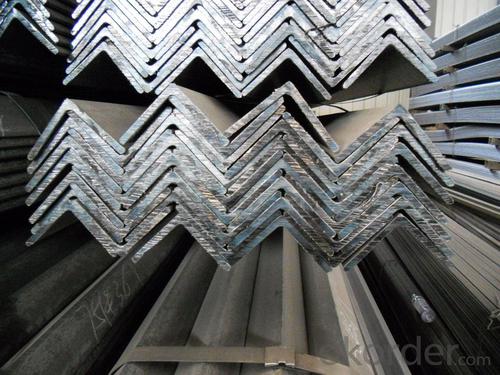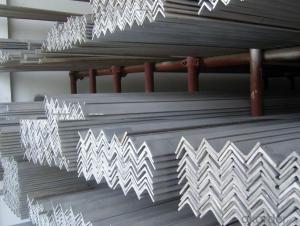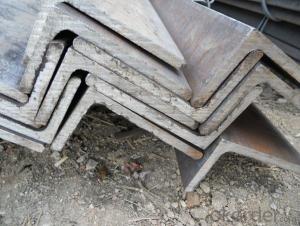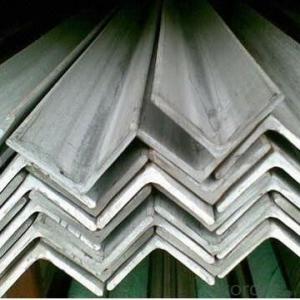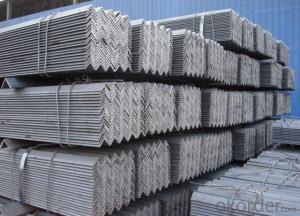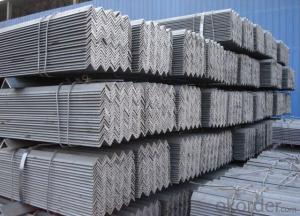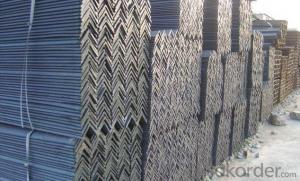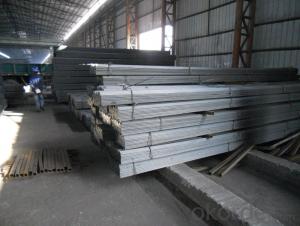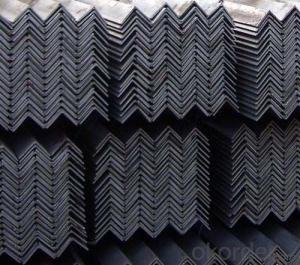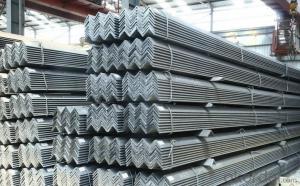Steel Equal Angle with Good Quality 130mm-140mm
- Loading Port:
- Tianjin
- Payment Terms:
- TT OR LC
- Min Order Qty:
- 50 m.t
- Supply Capability:
- 15000 m.t/month
OKorder Service Pledge
OKorder Financial Service
You Might Also Like
Specification
Product Description:
Specifications of Steel Equal Angle with Good Quality 130mm-140mm:
1. Invoicing on theoretical weight or actual weight as customer request
2. Length: 6m, 9m, 12m as following table
3. Sizes

| Size(mm) | Mass(Kg/m) | Size(mm) | Mass(Kg/m) |
| 130*130*10.0 | 19.625 | 140*140*12.0 | 25.522 |
| 140*140*10.0 | 21.488 | 140*140*14.0 | 29.49 |
Payment terms:
1).100% irrevocable L/C at sight.
2).30% T/T prepaid and the balance against the copy of B/L.
3).30% T/T prepaid and the balance against L/C
Material details:
Grade | Element (%) | ||||
C | Mn | S | P | Si | |
Q235 | 0.12—0.20 | 0.3—0.7 | ≤0.045 | ≤0.045 | ≤0.3 |
Usage & Applications of Steel Equal Angle with Good Quality 130mm-140mm:
According to the needs of different structures, Angle can compose to different force support component, and also can be the connections between components. It is widely used in various building structures and engineering structures such as roof beams, bridges, transmission towers, hoisting machinery and transport machinery, ships, industrial furnaces, reaction tower, container frame and warehouse etc.
Packaging & Delivery of Steel Equal Angle with Good Quality 130mm-140mm:
1. Packing: it is nude packed in bundles by steel wire rod
2. Bundle weight: not more than 3.5MT for bulk vessel; less than 3 MT for container load
3. Marks:
Color marking: There will be color marking on both end of the bundle for the cargo delivered by bulk vessel. That makes it easily to distinguish at the destination port.
Tag mark: there will be tag mark tied up on the bundles. The information usually including supplier logo and name, product name, made in China, shipping marks and other information request by the customer.
If loading by container the marking is not needed, but we will prepare it as customer request.
Production flow of Steel Equal Angle with Good Quality 130mm-140mm:
Material prepare (billet) —heat up—rough rolling—precision rolling—cooling—packing—storage and transportation
FAQ:
Q1: Why buy Materials & Equipment from OKorder.com?
A1: All products offered byOKorder.com are carefully selected from China's most reliable manufacturing enterprises. Through its ISO certifications, OKorder.com adheres to the highest standards and a commitment to supply chain safety and customer satisfaction.
Q2: How do we guarantee the quality of our products?
A2: We have established an advanced quality management system which conducts strict quality tests at every step, from raw materials to the final product. At the same time, we provide extensive follow-up service assurances as required.
Q3: How soon can we receive the product after purchase?
A3: Within three days of placing an order, we will begin production. The specific shipping date is dependent upon international and government factors, but is typically 1 to 2 months.
Q4: How many tons can be loaded into one 20ft container?
A4: Around 23—25tons
Images of Steel Equal Angle with Good Quality 130mm-140mm:
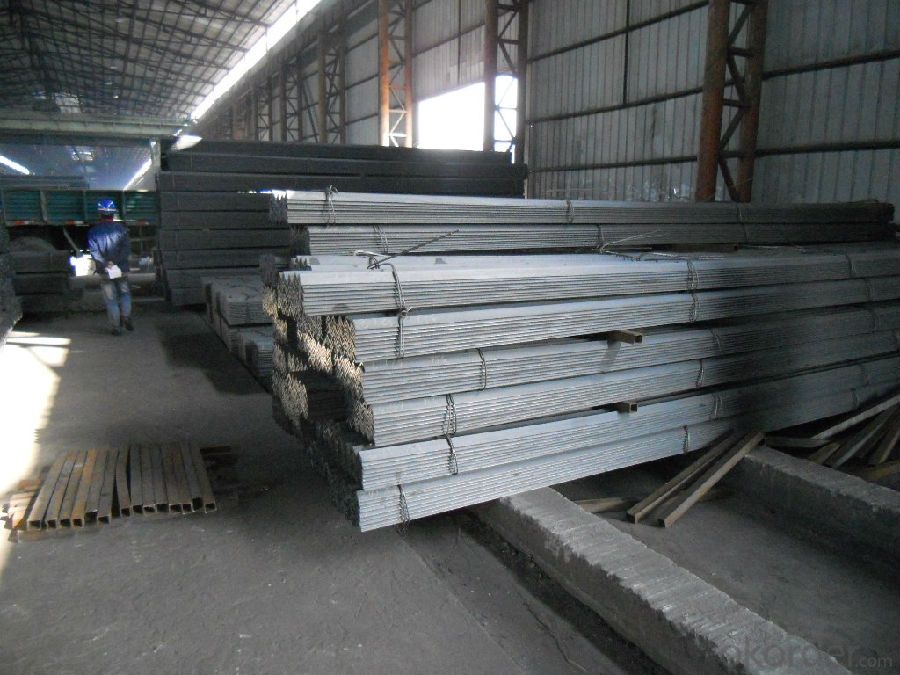
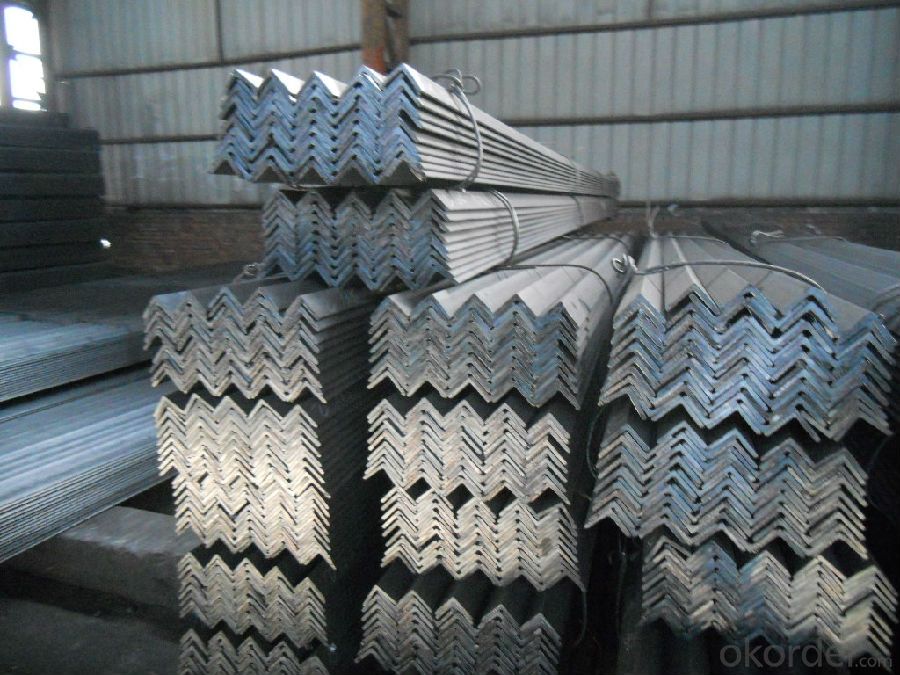
- Q: What are the different grades of steel used in manufacturing steel angles?
- Steel angles used in manufacturing can be found in various grades. These grades differ in terms of composition, strength, and other properties. The selection of a grade is based on the specific requirements of the application. One commonly used grade is mild steel, which is also known as low carbon steel or A36 steel. This grade is widely accessible and frequently utilized due to its affordability and ease of machining. It is often employed in general construction and fabrication projects. Another grade is high-strength low-alloy steel (HSLA), which contains small amounts of alloying elements such as copper, phosphorus, niobium, or vanadium. HSLA steels provide higher strength and improved corrosion resistance compared to mild steel. This makes them suitable for structural applications in heavy machinery or marine environments. There are also higher-strength steels, such as high-strength steel angles (HSS) or ultra-high-strength steel angles (UHSS). These grades are specifically engineered to offer exceptional strength and durability. They are commonly used in demanding applications like bridges, high-rise buildings, or automotive components. Stainless steel is another frequently used grade in the manufacturing of steel angles. Its excellent corrosion resistance makes stainless steel angles ideal for food processing, chemical, or marine applications where resistance to rust and staining is crucial. The specific grade of steel employed in manufacturing steel angles depends on factors like load-bearing requirements, corrosion resistance, and cost considerations. Consulting with a structural engineer or steel supplier can aid in determining the most suitable grade for a particular application.
- Q: What are the load-bearing capacities of different sizes and types of steel angles?
- The load-bearing capacities of different sizes and types of steel angles vary depending on factors such as the material grade, dimensions, and specific design requirements. It is essential to consult engineering tables or design codes, as they provide detailed information on load-bearing capacities for different steel angles.
- Q: What are the common applications of steel angles?
- Steel angles are widely used in various applications due to their versatility and strength. Some common applications of steel angles include: 1. Structural support: Steel angles are commonly used as structural elements in buildings and bridges. They provide strength and stability to the structure and are often used as beams, columns, and braces. 2. Construction: Steel angles are used in construction projects to create frames, supports, and reinforcements. They can be used to create corners in walls, support roof trusses, and provide additional strength to concrete structures. 3. Machinery and equipment: Steel angles are utilized in the manufacturing of machinery and equipment. They are often used as brackets, frames, and supports for various components. Steel angles provide stability and structural integrity to these machines. 4. Industrial shelving and racks: Steel angles are commonly used to construct industrial shelving units and racks. They provide a sturdy and reliable structure to store heavy items and maximize storage space. 5. Agricultural equipment: Steel angles are used in the fabrication of agricultural machinery and equipment. They are often used to create frames, supports, and brackets for farm implements such as plows, cultivators, and harvesters. 6. Fencing and barriers: Steel angles are utilized in the construction of fences, barriers, and handrails. They provide a strong and durable structure that can withstand harsh weather conditions and provide security. 7. Transportation: Steel angles are used in the construction of vehicles and transportation equipment. They can be found in truck beds, trailers, and railings. Steel angles offer strength and stability to these structures, ensuring safe transportation of goods and passengers. 8. Decorative and architectural applications: Steel angles are often used in decorative and architectural applications. They can be incorporated into building facades, staircases, and ornamental metalwork. Steel angles provide a modern and sleek look while also offering structural support. Overall, steel angles have a wide range of applications in various industries due to their strength, versatility, and durability.
- Q: How do steel angles perform in high-wind regions?
- Steel angles perform well in high-wind regions due to their structural strength and ability to resist wind loads. The angled shape of the steel provides stability and prevents the structure from swaying or being damaged by strong winds. Additionally, steel angles are commonly used in the construction of buildings and structures in high-wind areas, such as hurricane-prone regions, as they offer excellent resistance to wind pressure. The high tensile strength of steel makes it highly resilient to the forces exerted by strong winds, ensuring the stability and integrity of the structure. Moreover, steel angles can be designed and engineered to meet specific wind load requirements, enabling them to withstand extreme weather conditions. Overall, steel angles are a reliable and effective choice for construction in high-wind regions, ensuring the safety and durability of the structures.
- Q: What are the common lengths available for steel angles?
- The common lengths available for steel angles vary, but they typically range from 20 feet to 40 feet.
- Q: Can steel angles be used for manufacturing storage racks?
- Yes, steel angles can be used for manufacturing storage racks. Steel angles are strong and durable, making them suitable for supporting heavy loads in storage rack systems. Additionally, their shape allows for easy assembly and customization of storage rack designs.
- Q: Are steel angles suitable for architectural sculptures or installations?
- Yes, steel angles can be suitable for architectural sculptures or installations. Steel angles are versatile and durable, making them a popular choice for creating intricate and visually appealing structures. Their geometric shape allows for interesting angles and shapes to be formed, adding a unique aesthetic to architectural sculptures or installations. Additionally, steel angles can be easily welded or attached together, providing flexibility in design and construction. The strength and stability of steel angles also make them suitable for outdoor installations, as they can withstand various weather conditions. Overall, steel angles offer architects and artists a reliable and versatile material to create innovative and striking sculptures or installations.
- Q: How do steel angles contribute to the durability of a structure?
- Steel angles contribute to the durability of a structure in several ways. First and foremost, steel angles are known for their high strength and load-bearing capacity. They are commonly used in construction to provide added support and stability to various structural elements such as beams, columns, and trusses. The rigidity and strength of steel angles ensure that the structure can withstand heavy loads, impacts, and external forces. This is especially crucial in buildings that are exposed to extreme weather conditions, seismic activities, or high winds. By distributing the load evenly, steel angles help prevent excessive deflection, bending, or deformation that could compromise the integrity and longevity of the structure. Moreover, steel angles are corrosion-resistant, making them ideal for structures that are exposed to moisture, humidity, or harsh environments. Unlike other building materials, steel does not rot, decay, or warp over time. It maintains its structural integrity for an extended period, reducing the need for frequent repairs and replacements. In addition to their strength and corrosion resistance, steel angles also contribute to the durability of a structure through their versatility. They can be easily customized and fabricated into various shapes and sizes, allowing for efficient construction and design flexibility. This adaptability ensures that steel angles can be efficiently integrated into different architectural and engineering requirements, enhancing the overall durability and functionality of the structure. Overall, the use of steel angles in construction significantly enhances the durability of a structure. Their high strength, load-bearing capacity, corrosion resistance, and versatility all contribute to the overall stability, longevity, and structural integrity of the building, ensuring it can withstand various challenges and maintain its durability over time.
- Q: What are the advantages of using steel angles in construction?
- There are several advantages of using steel angles in construction: 1. Strength and durability: Steel angles are known for their high tensile strength, making them an ideal choice for construction projects that require structural support. They can withstand heavy loads and provide stability, ensuring the longevity and safety of the structure. 2. Versatility: Steel angles come in various sizes and dimensions, allowing for flexibility in design and construction. They can be easily cut, welded, and shaped to fit specific requirements, making them suitable for a wide range of applications. 3. Cost-effective: Steel angles are relatively inexpensive compared to other building materials, such as concrete or wood. They offer a cost-effective solution without compromising on quality or structural integrity. 4. Fire resistance: Steel angles have excellent fire resistance properties, making them a safer choice for construction. In the event of a fire, steel angles will not burn, warp, or emit toxic fumes, reducing the risk of structural collapse and providing more time for evacuation. 5. Sustainable and eco-friendly: Steel is one of the most recycled materials in the world. Using steel angles in construction promotes sustainability and reduces the demand for new steel production. Additionally, steel is 100% recyclable, ensuring minimal environmental impact. 6. Easy installation: Steel angles are lightweight and easily transported to the construction site, making them convenient for installation. Their ease of handling and quick assembly can help reduce construction time and labor costs. 7. Resistance to corrosion: Steel angles can be treated with protective coatings, such as galvanization, to enhance their resistance to corrosion. This ensures that the structure remains durable and maintains its structural integrity even in harsh environmental conditions. Overall, the advantages of using steel angles in construction include their strength, versatility, cost-effectiveness, fire resistance, sustainability, easy installation, and resistance to corrosion. These qualities make steel angles a popular choice for various construction projects, ranging from residential buildings to large industrial structures.
- Q: Can steel angles be used as reinforcement in concrete structures?
- Yes, steel angles can be used as reinforcement in concrete structures. Steel angles are often used as L-shaped or angle-shaped bars that are embedded within the concrete to provide additional strength and support to the structure. These angles help to resist tensile forces and prevent cracking or failure of the concrete. They are commonly used in applications such as beams, columns, and walls to enhance the structural integrity and load-bearing capacity of the concrete elements. Additionally, steel angles can be easily welded or bolted together, making them a versatile and cost-effective choice for reinforcement in concrete structures.
Send your message to us
Steel Equal Angle with Good Quality 130mm-140mm
- Loading Port:
- Tianjin
- Payment Terms:
- TT OR LC
- Min Order Qty:
- 50 m.t
- Supply Capability:
- 15000 m.t/month
OKorder Service Pledge
OKorder Financial Service
Similar products
Hot products
Hot Searches
Related keywords



